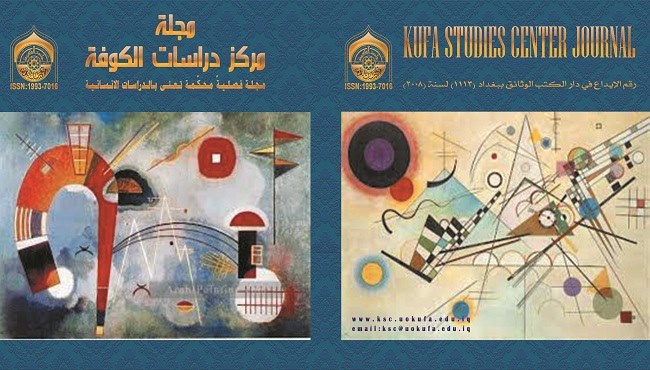الطريقة الأسية لحل مشكلة النقل مع تطبيق عملي
DOI:
https://doi.org/10.36322/jksc.v1i53.5028Abstract
إن مشكلة النقل هي اسلوب رياضي مهم في عملية اتخاذ القرار المناسب في نقل كمية من السلع من مصادر تصنيعها إلى مراكز طلبها بأقل كلفة الممكنة.
في هذا البحث تم عرض انموذج لمشكلة النقل ، وحل هذا الانموذج باستعمال الطريقة الاسية لإيجاد الحل الأمثل لمشكلة النقل , وتعتبر هذه الطريقة من الطرق الحديثة والمهمة لأصحاب القرار الاقتصادي والخدمي للمنشآت الانتاجية، ولغرض مقارنة النتائج باستخدام برنامج (WIN.QSB) , وتم تطبيق الطريقة الاسية لحل مشكلة نقل منتوج النفط الاسود من المستودعات إلى المحافظات الطالبة للمنتج مصافي الوسط ، وتم التوصل الى نتائج جيدة في تقليل كلف النقل ، وبعد تطبيق الطريقة الاسية جاءت بكلفة كلية (113225) دينار ، اما نتائج طريقة حل البرمجة الخطية بلغت ( 111075 ) دينار.
Transportation problem is an important mathematical method in the decision-making process in transferring the quantity of goods from the sources of manufacturing to the centers requested at the lowest possible cost.
In this research, a model was presented for the transport problem, and this model was solved by using the exponential method to find the optimal solution for the transport problem. This method is considered as a modern and important method for economic and service decision makers for the production facilities. For the purpose of comparing the results using WIN.QSB, To solve the problem of transferring the black oil product from the warehouses to the governorates requesting the product of the intermediate refineries, good results were achieved in reducing the cost of transport. After the implementation of the exponential method came at a total cost of (113225) ID. The results of the method of solving the linear programming amounted to (111075) ID.
Downloads
Downloads
Published
How to Cite
Issue
Section
License
Copyright (c) 2022 مجلة مركز دراسات الكوفة | Journal of Kufa Studies Center

This work is licensed under a Creative Commons Attribution 4.0 International License.
Permit others to distribute and copy the manuscript, to create extracts, abstracts, and other revised versions, adaptations, or derivative works of or from the manuscript (such as a translation), to include in a collective work, to text or data mine the article, even for commercial purposes, as long as they credit the author(s), do not represent the author as endorsing their adaptation of the article, and do not modify the article in such a way as to damage the author''''s honor or reputation. Further details are found at Creative Commons Attribution 4.0 International (CC BY 4.0)






























